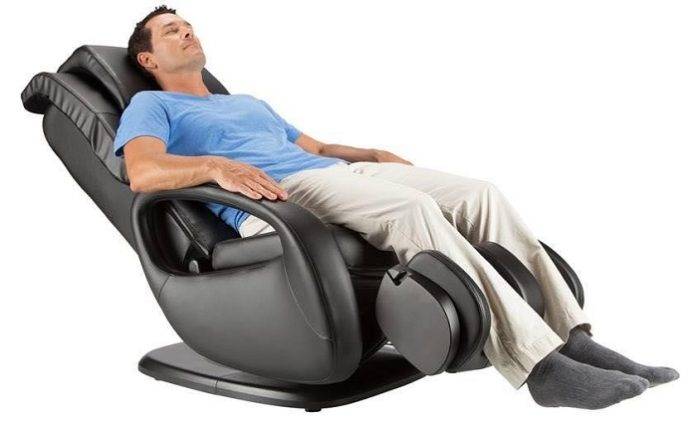Introduction:
It was a chilly autumn evening in Ottawa. Ethan, a university soccer player with dreams of going pro, collided mid-air with an opponent and landed awkwardly. The sideline crackled with concern. His ankle swelled up within minutes, and the pain was sharp enough to end his game, possibly his season. But Ethan was lucky—he had immediate access to a skilled physiotherapist in Ottawa, and that made all the difference.
This story isn’t just about one athlete—it’s about a growing body of research and practice in early sports therapy interventions and how they are radically improving recovery outcomes. For students studying health sciences or aspiring physiotherapists, this field holds both promise and responsibility. Through this article, we explore how modern physiotherapy in Ottawa, particularly physical therapy massage, is transforming acute injury recovery into a precise, proactive science.
The Critical Window: Why Timing Matters
Acute injuries, such as sprains, strains, and contusions, demand immediate attention. The first 72 hours are crucial, and how an injury is handled during this window can dictate the trajectory of recovery. Here’s what recent studies tell us:
- According to a 2023 review in the British Journal of Sports Medicine, early rehabilitation reduces the time to return-to-play by nearly 30%.
- Canadian healthcare reports highlight that athletes treated within 24 hours of injury are 45% less likely to experience re-injury within the same season.
Why such dramatic outcomes? Because early interventions help in:
- Reducing inflammation before it hardens into chronic swelling.
- Controlling pain through neuromuscular feedback mechanisms.
- Preventing compensatory movement patterns, which often lead to secondary injuries.
This is where evidence-based sports therapy comes in.
Physical Therapy Massage: More Than Just Relaxation
While many associate massage therapy with relaxation, physical therapy massage is rooted in medical science. When used strategically, especially post-injury, it can be a powerful modality to manage pain, reduce swelling, and promote tissue healing.
Three Major Benefits:
- Pain Modulation
- Techniques like myofascial release and trigger point therapy interrupt pain signals at the neurological level.
- According to McMaster University’s Department of Kinesiology, patients who received massage within the first week of an injury reported 35% less pain than those who did not.
- Swelling Reduction
- Manual lymphatic drainage and effleurage strokes help mobilize interstitial fluid, reducing inflammation naturally without drugs.
- Scar Tissue Management
- After about 10-14 days, gentle cross-fiber massage can help realign collagen fibers, reducing the risk of adhesions and stiffness.
These are not passive procedures—they require skilled touch and clinical decision-making, best administered by a certified physiotherapist familiar with sports-related trauma.
From Sideline to Rehab Table: A Strategic Approach
For physiotherapy students, understanding the progression from acute care to active recovery is essential. Here’s a simplified roadmap that professionals follow:
Phase 1: Acute Management (0–72 Hours)
- RICE method: Rest, Ice, Compression, Elevation.
- Gentle pain-free mobilization.
- Initial assessment by a physiotherapy provider to classify the injury severity.
Phase 2: Subacute Phase (3–10 Days)
- Introduction of physical therapy massage for edema and pain control.
- Passive range-of-motion exercises.
- Neuromuscular re-education begins to restore muscle firing patterns.
Phase 3: Functional Strengthening (1–3 Weeks)
- Active-assisted and resistance exercises.
- Deep tissue massage targeting scar tissue remodeling.
- Proprioceptive training to regain balance and joint stability.
Phase 4: Sport-Specific Return (3–6 Weeks and beyond)
- Dynamic drills, sport simulations, and gradual re-entry into practice.
- Ongoing massage therapy for muscle maintenance and injury prevention.
At every stage, clinical decisions must be based on both objective data and the athlete’s subjective feedback. Progressive interventions aren’t one-size-fits-all—they evolve.
Real World Application: The Physiocare Advantage
Let’s return to Ethan, the soccer player. Thanks to immediate assessment and a tailored program at Physiocare Physiotherapy & Rehab Centre, he received a blend of advanced sports taping, neuromuscular massage, and progressive mobilization. Not only did he avoid surgery, but he was also back on the field in six weeks—two weeks ahead of schedule.
Physiocare’s multidisciplinary approach is a model for modern rehab: quick access, expert evaluation, and evidence-based interventions that are customized to the individual.
The Bigger Picture: Why This Matters for Students
For students in Ottawa pursuing kinesiology, physiotherapy, or sports medicine, this field offers:
- Career potential in high-demand clinical settings.
- Opportunities for innovation, particularly in blending manual therapy with emerging tech (like real-time ultrasound for muscle tracking).
- A chance to make a difference, especially for youth athletes whose futures depend on how well they recover today.
Moreover, learning to interpret research, adapt protocols, and think critically in high-stakes situations is not just academic—it’s essential.
Conclusion:
Injuries may be inevitable in sports, but poor recovery doesn’t have to be. The shift toward early, strategic, and progressive physical therapy—especially with specialized massage techniques—is reshaping the future of rehabilitation.
Whether you’re an athlete, a student, or a physiotherapist, understanding this new frontier can turn potential setbacks into opportunities for smarter healing and stronger comebacks.
Let Ethan’s story be a reminder: In the hands of skilled professionals, recovery is not just about getting back—it’s about moving forward better than before.


